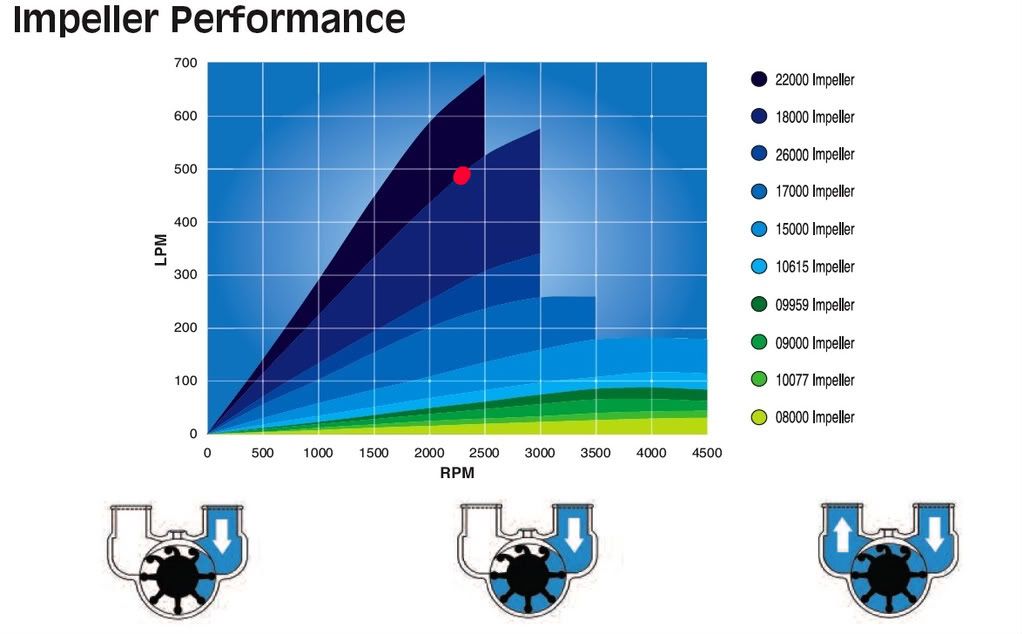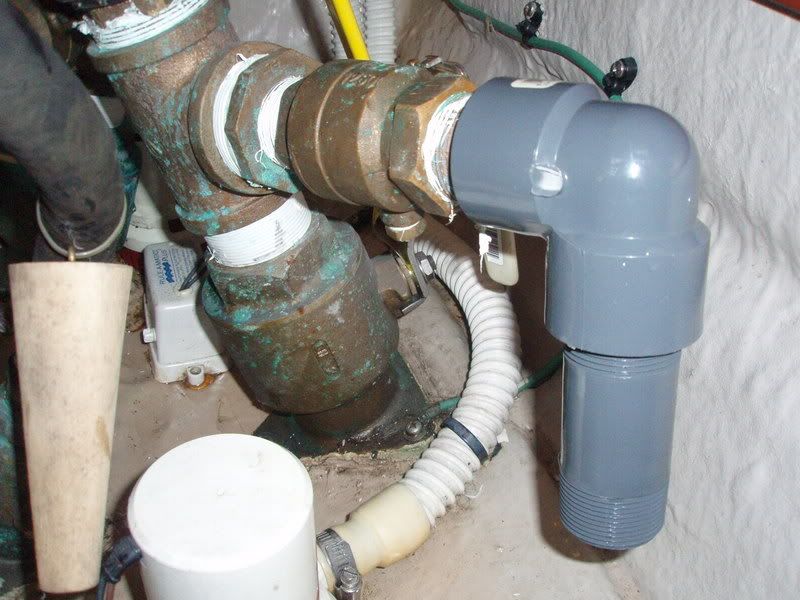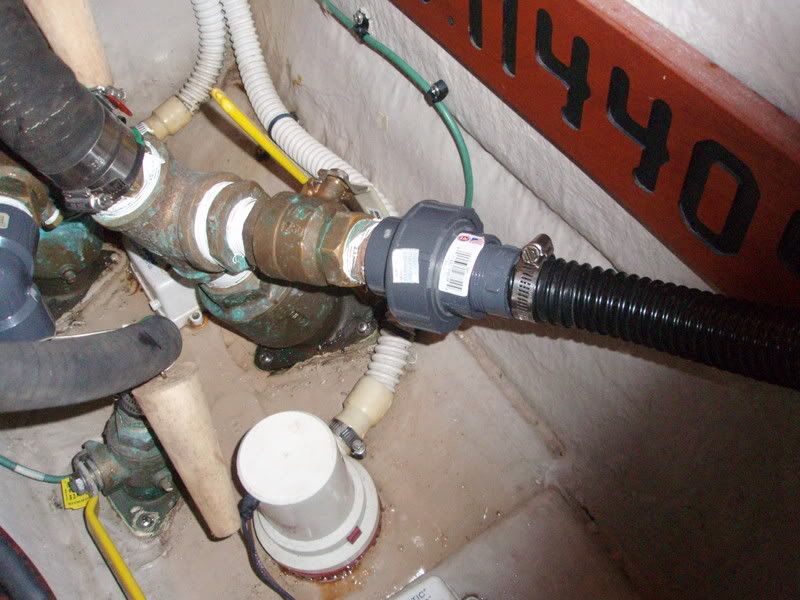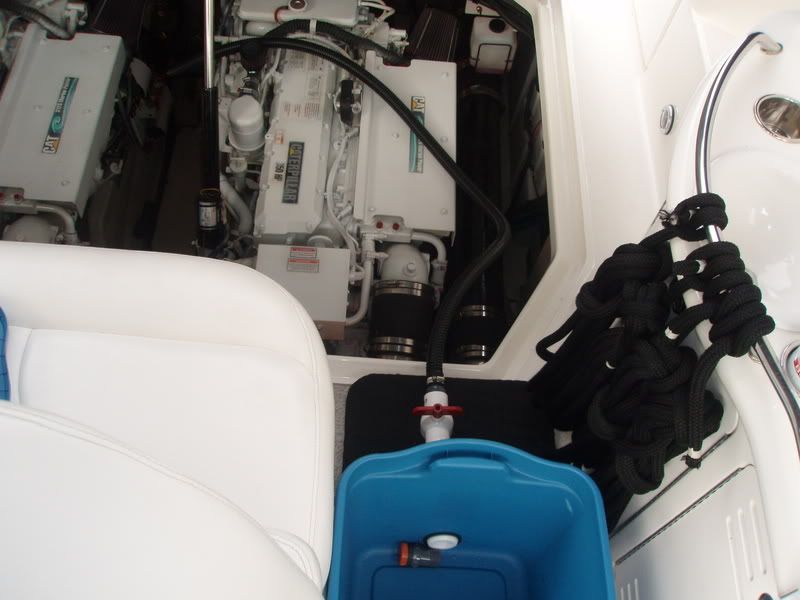Alex F
Well-Known Member
- Nov 14, 2006
- 9,166
- Boat Info
- 2005 420DB with AB 11 DLX Tender, Raymarine Electronics (2x12" MFDs) with Vesper AIS
- Engines
- Cummins 450Cs, 9KW Onan Generator, 40HP Yamaha for tender.
After having a discussion in Collision at Sea thread we can see how important to have the crash valves or intake diverter valves on the seacocks installed. I haven’t seen anything like that offered by Sea Ray. So, I was wandering if anyone had fabricated something simple and efficient that can share.
I was also thinking that since majority of recreational boats don’t have the crash valves, what could be a quick workaround for situations when a boat is taking on water in faster rate than both pumps can handle? I could think of two possible options:
Since I have fabricated flushing system on my boat I think that I have pretty good chance on using option #2 and run even all 3 engines (both mains and genny). As you can see in the image below all I would do is to use the hose that goes to city water and run it all the way in the bilge. Then, after closing all 3 seacocks and opening 3 valve in the stern locker I could startup all 3 engines. The only limitation I see here is the size of the hose (5/8"), but I would still think that it's a pretty good option vs. not having it.
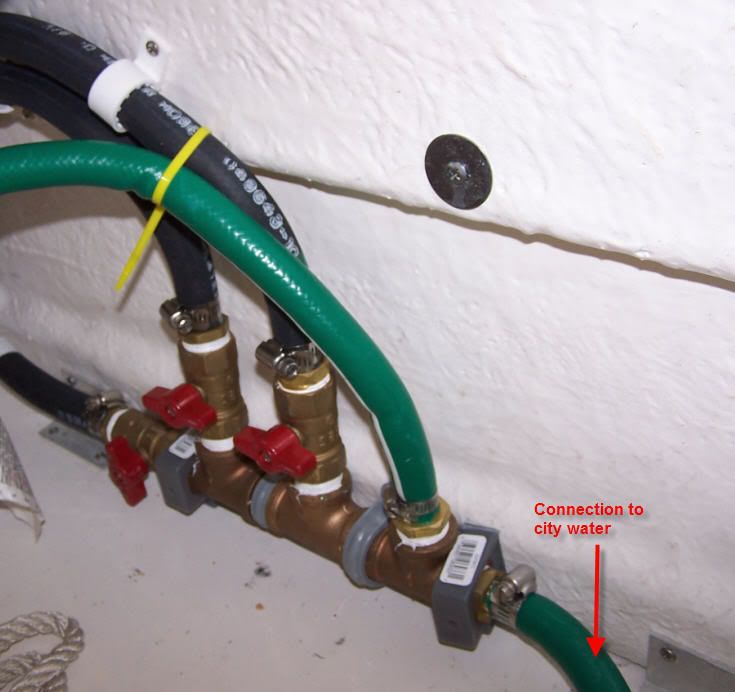
Please share your ideas so we can add to the list of options on how to get the water out of the bilge in case of an emergency when manual bilge pump is out of the question.
I was also thinking that since majority of recreational boats don’t have the crash valves, what could be a quick workaround for situations when a boat is taking on water in faster rate than both pumps can handle? I could think of two possible options:
- Since it would most likely take a while to disconnect intake hose from the seacock (whether it’s from an engines or generator) cutting the hose with a sharp knife or a hacksaw could work much faster. Then, you can direct the hose to the bottom of the bilge and run the engine or generator or both (whatever you choose to work as a alternative) to help pumping the water out. Obviously, before attempting this you must CLOSE THE SEACOCK to which the hose you’re about to cut is connected.
- In addition I think that boats that are equipped with flushing system have another option that could avoid cutting the intake hoses. I will do this test next season on my boat, but I’m almost positive that connecting a hose to a flushing connector while having the other end of the hose go to the bottom of the bilge, closing the seacock and running the engine should pump the water out at much better rate than bilge pumps. Adding RPMs just a little should also accelerate the pumping process.
- Another option I just thought of is to carry pretty powerful (similar to house sewer pumps) 120v AC water pump as part of your gear. So, by starting your generator the pump can be plugged in to AC outlet. For boats without generators a most powerful 12v DC spare water pump could be an alternative. But, I would think that there’s a big difference between the amount of water 12v pump can deliver vs. 120v pumps.
Since I have fabricated flushing system on my boat I think that I have pretty good chance on using option #2 and run even all 3 engines (both mains and genny). As you can see in the image below all I would do is to use the hose that goes to city water and run it all the way in the bilge. Then, after closing all 3 seacocks and opening 3 valve in the stern locker I could startup all 3 engines. The only limitation I see here is the size of the hose (5/8"), but I would still think that it's a pretty good option vs. not having it.

Please share your ideas so we can add to the list of options on how to get the water out of the bilge in case of an emergency when manual bilge pump is out of the question.
Last edited:






